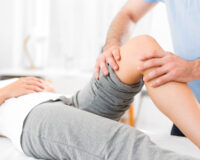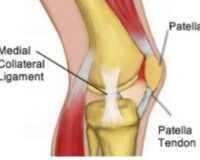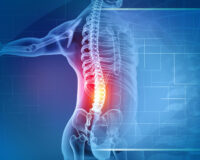
Getting through the Festive season!
Getting into this time of year, specifically the weeks of celebration around Christmas, people often feel that they over-indulge and gain unwanted kilograms (while losing muscle tone – particularly around the stomach).
Whilst we can’t change the number of celebrations for you, or the delicious foods that arrive and tempt, we can at least give you some information and a few exercises to keep you going in the hopes that it can help get you through the festive season without too much damage!
Where does body fat come from?
Basically, any food/drink has a certain amount of “energy” attached to it. The items with a greater energy component will be higher in sugars and carbohydrates. The body uses up whatever energy it requires for what you are doing at that time, and stores any excess as fatty deposits to use later. If your energy input is always greater than what you actually need, your body will continue to deposit fatty cells around your body.
How can I stop this?
To combat this, a good combination of cardio exercise (including walking/running, cycling and swimming) and strength training to maintain muscle strength and tone is the best option.
Cardio exercise is the best form of exercise to remove the padding (or, should I say, pudding?!) over the muscles. It will need to be at least 15 minutes in length, to ensure the body gets to use up the fatty deposits (it needs to use the free-floating energy in the bloodstream first) – but really, the longer the better. It also should be done on most days of the week. In addition, it needs to be done at a moderate intensity. While there are methods to calculate your heart rate to tell what your moderate intensity should be, a good way to observe if you’re exercising to the required level is that you should be an element of “conversational puffing” – that is, you should have to stop to take a breath after every few words while you are talking and exercising. If you feel that you can talk easily while you walk, for example, your body may require more effort to actually use up fat stores.
Along with this, strength exercises will also be important. Not only will strengthening muscles make you stronger and improve the look of your muscles, but it will also mean your body will use more energy (especially with the bigger muscles such as the quadriceps and gluteals). The good thing about strength training is that, unlike cardio, it will show benefits if certain muscles are worked even 2-3 times per week, rather than every day.
Unfortunately however, if you only perform strength exercises and not the cardio component you may find your muscles are stronger but they may still be hidden under a layer of padding. This is why the cardio part is also important to help you see the changes!
The Exercises:
We have chosen exercises for the different body areas (the arms, the back, the tummy and the legs) in order to get the whole body working. The following exercises shouldn’t take too much time – and certainly, please feel free to pick & choose different exercises for different days. They should also be performed pain-free and should have no delayed pain onset (other than, perhaps, the normal ache that comes with working muscles!).
The Arms
Triceps Dips
Muscles worked: Triceps (back of the arms – the “bingo wings”)
Description: Place hands on small bench behind you. Slowly bend your elbows and lower your buttocks to the floor, making sure that your elbows are pointing straight behind you (not outwards). Just go as far as you can get back up! Keep body posture upright.
Aim for 20 slow repetitions.
Take care with: Shoulder pain – this exercise should not cause or exacerbate shoulder pain
–
Wall Press-ups
Muscles worked: Triceps, Pectorals, Shoulder blade muscles (especially with correct posture)
Description: Place hands on wall, with body in a straight line. Slowly bend elbows outwards, bringing your head close to the wall. This exercise will be harder with your feet further from the wall.
Aim for 20 repetitions.
Take care with: Shoulder pain – this exercise should not cause or exacerbate shoulder pain
–
The Back
Bridging
a)
b)
c)
Muscles worked: Gluteals (buttocks), Hamstrings (back of thigh), Back extensors
Description: Lie on back with knees bent up. Slowly roll buttocks and back off the floor, aiming for one vertebra at a time (a).
While lifted, lift one leg out straight and hold position for 5 seconds (or more!) (b).
To target the buttock muscles more, place feet on wall. Slowly roll buttocks and back off floor, aiming for one vertebra at a time (c)
Try for 20 repetitions.
Take care with: Lower back pain – this exercise should not cause or exacerbate back pain. (It should be helpful with lower back stiffness)
–
Prone Leg Lift
Muscles worked: Gluteals, Hamstrings
Description: Lying on stomach with legs straight behind you, slowly bend one knee to 90⁰. Then, lift knee off floor, keeping front of hips on the floor. While leg is lifted, slowly straighten it out. Then lower to the ground. (Try to separate each movement to make the muscles work harder!).
Repeat 10 times each leg.
Take care with: Lower back pain – this exercise should not cause or exacerbate back pain
–
The Tummy
100’s
a)
b)
c)
Muscles worked: Abdominals, Thighs (slightly)
Description: Lie on back with back flat on floor. Start with hips/knees bent to 90⁰ (a). Then, while keeping back flat on floor and shoulder relaxed, slowly straighten one leg out (b). Bend leg back in and then swap to straightening the other leg. Your back remains flat on the floor for this exercise.
For extra abdominal work, start in the same position at 90⁰(a). You can then try straightening both legs out as you lift the chest off the floor (c). Slowly lower back down to floor, while bending the legs back to 90⁰. (Do not attempt this if you have a lower back injury without checking with your physiotherapist first).
Take care with: Lower back/neck pain – this exercise should not cause or exacerbate back/neck pain
Sit-ups with rotation
Muscles worked: Oblique abdominals
Description: Place one hand behind your head (to fully support your head), and the other on your opposite thigh. Rotate the upper body, lifting one shoulder blade off the floor while reaching for the opposite knee. Your lower back should remain on the floor. Slowly return to floor.
Aim for 15 repetitions on each side
Take care with: Lower back/neck pain – this exercise should not cause or exacerbate back/neck pain
–
Forward Plank
Muscles worked: All abdominals, arm and leg muscles
Description: Start on all 4’s, with shoulders over the hands. Slowly extend one leg out behind you, followed by the other. Aim to keep your body as straight as possible.
Hold for as long as possible – aim for 30 seconds (or longer!)
Take care with: Lower back pain, shoulder pain – this exercise should not cause or exacerbate either
The Legs
Squat
Muscles worked: Quadriceps (front of thigh), Gluteals
Description: Start with back against wall, feet away from wall. Slowly slide down the wall until the knees are close to 90⁰. Make sure your knees are pointing directly over your feet, and that your knees are not bent past your feet.
Either: Hold position for 30 seconds, or
Aim for 30 slow repetitions (sliding slowly down and up)
Take care with: Knee pain – this exercise should not cause or exacerbate knee pain
Lunge
Muscles worked: Quadriceps, Gluteals, Abdominals (when correct posture)
Description: Start with leg about a stride apart. Keep back straight, bend back knee down to floor. Both knees should be bent to 90⁰ for maximal muscle work.
Aim for 10 repetitions (slowly) on each leg
Take care with: Knee pain – this exercise should not cause or exacerbate knee pain
Along with these exercises, don’t forget to get some cardio exercise in too! This can be walking, running, cycling or swimming (anything that gets the heart rate up). As mentioned earlier, this needs to be for at least 15 minutes of moderate exercise and on most days of the week to have the greatest impact.
Happy exercising, and please remember to take care with your exercises. Please contact us on (08) 8221 5011, or email us at info@therapia.com.au if you would like to know more information, or have any queries.
Finally, from all of us at Therapia Physiotherapy and Pilates, we hope that you have a wonderful festive season, and a safe and happy start to 2017!
Book Appointment



